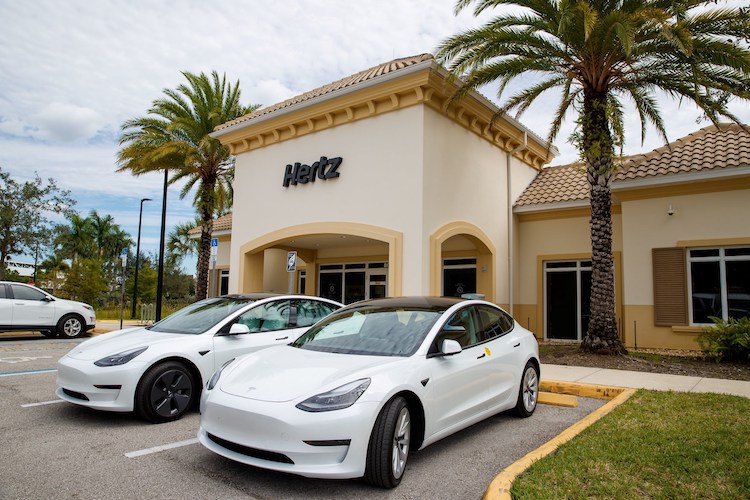
Hertz intends to sell off about 20,000 EVs (including Teslas) – about a third of its US fleet – aiming to reinvest some of the proceeds into internal combustion engine (ICE) rental vehicles to meet customer demand.
In a report to the United States Securities and Exchange Commission, Hertz Global Holdings says the EV sell-off started in December 2023 and is expected to continue this year, covering multiple makes and models.
“EVs held for sale will remain eligible for rental within the company’s fleet during the sales process,” says Hertz.
It expects to get US$245 million of incremental net depreciation expense related to the sale, representing the write down of the EVs’ carrying values as of December 31, 2023 to their fair values, less related expenses associated with the disposition of the vehicles.
Hertz expects the EV sale “to better balance supply against expected demand of EVs”, adding it will continue to execute its strategy around EV mobility and offer customers a wide selection of vehicles.
EV fleet profitability
It expects to continue improving its EV fleet profitability through “expansion of EV charging infrastructure, growing relationships with EV manufacturers, particularly related to more affordable access to parts and labour, and continued implementation of policies and educational tools to help enhance the EV experience for customers”.
Hertz intends managing the total size of its EV fleet, as well as the allocation of EVs among customer segments, including leisure, corporate, government and rideshare, forecasting the EV sale will improve its financial position through to the end of 2025, allowing “incremental free cash flow generation related to this action will approximate US$250 million to $300 million in the aggregate over 2024 and 2025”.
It aims to report financial results for the fourth quarter ended December 31, 2023, on February 6, 2024, expecting to report 2023 fourth quarter revenue around US$2.1 billion to $2.2 billion.
Hertz says expenses related to collision and damage, primarily associated with EVs, remained high in the quarter, thereby supporting the company’s decision to reduce its US EV fleet, adding inflationary pressures, global supply chain disruptions, competition, travel demand, EV economic uncertainty (including demand, pricing, maintenance, incidence rate and cost of collision and damages, and residual value volatility), and other factors may have an impact.








